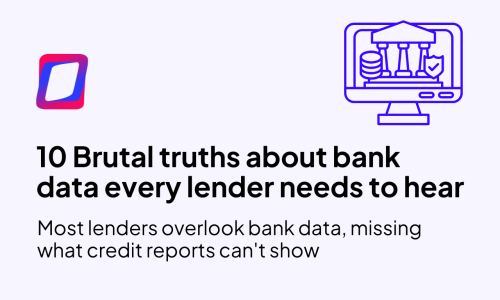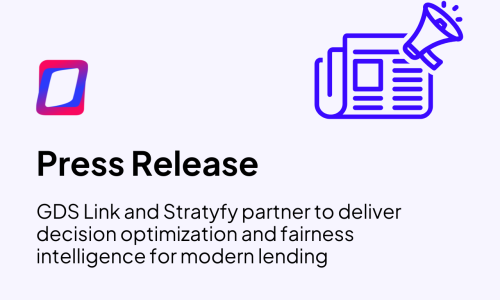The UK BNPL Regulation Isn’t the Threat. Ignoring It Is.
By Francisco Franch, Account Manager, GDS Link
For years, Buy Now, Pay Later has lived in a regulatory grey zone, more popular than payday loans, slicker than credit cards, and until now, largely untouched by the rules that govern other forms of lending. That’s about to change.
Last week, the UK government announced new legislation that aims to bring the booming BNPL space under the umbrella of formal consumer credit regulation. The headlines called it a crackdown. But for those of us who work with lenders every day, it feels more like a long-overdue leveling of the playing field.
The rules, expected to take effect in 2026, will require BNPL providers to run proper affordability checks, provide faster refund access, and give consumers the right to escalate complaints to the Financial Ombudsman.
It sounds basic and it is. But that’s kind of the point.
For too long, BNPL has operated on speed, simplicity, and scale. Those things don’t need to disappear. But they do need to evolve.
From Gap-Filler to Credit Product
What started as a checkout add-on has now become a primary way people manage their budgets. According to the Financial Conduct Authority, nearly 11 million people in the UK used a BNPL product last year. New data from Money Wellness showed a 68% jump in users seeking help with BNPL-related debt. These aren’t people financing luxury items. They’re covering groceries, back-to-school shopping, and winter coats for their kids.
As someone who’s worked closely with lenders rolling out BNPL solutions, I’ve seen firsthand how quickly these products can scale and how tricky it is to balance user experience with responsible lending. The new regulation isn’t just a compliance checklist. It’s a moment of reckoning for an industry that’s grown up in the shadow of the credit card business and is now being asked to stand on the same legal footing.
The End of the “Wild West”?
It’s telling that government officials didn’t hold back on language. Emma Reynolds, economic secretary to the Treasury, called the current BNPL landscape a “wild west” that exposed too many consumers. Citizens Advice was even more blunt: “For some, this has had dire consequences.”
But if you ask most BNPL providers — Klarna, Clearpay, Laybuy — you’ll find they’ve been bracing for this for a while. Klarna has supported regulation since 2020. Clearpay’s recent statement welcomed “fit-for-purpose regulation” that could strengthen consumer trust and help the sector grow sustainably.
This isn’t about shutting BNPL down. It’s about making sure it fits into a financial system that already has rules for borrowing, debt collection, and consumer protection. That means real-time affordability checks.
Transparent repayment terms. And data sharing with credit reference agencies, like TransUnion, which has already moved to include BNPL data in credit files.
Why It Matters to Lenders (And What Comes Next)
The shift presents an opportunity for traditional lenders — banks, credit unions, and even alternative finance providers. Many already have the infrastructure to meet these new requirements. But the real challenge will be adapting the speed and UX that BNPL users have come to expect, without sacrificing compliance or decision quality.
At GDS Link, we’re already helping lenders in the UK prepare for what’s next. That means upgrading credit decisioning engines to support short-term credit models. It means building real-time affordability models that work across traditional and alternative data sources. And it means integrating those models into seamless, on-brand digital experiences.
The FCA will still need to lay out the specific rulebook. But lenders shouldn’t wait. Consumer expectations are already shifting. And so are investor expectations.
BNPL Isn’t Going Away. But It Is Growing Up.
This regulation doesn’t mark the end of BNPL. In fact, it might be the moment it gets taken seriously as a core part of the credit ecosystem.
The conversation is changing as Klarna, Affirm, and Monzo Flex vie for market share and as banks look to launch their own BNPL offerings. The race is no longer about who can approve the fastest. It’s about who can do it best, and do it right.
Because when 41% of BNPL users report missing a payment, and a growing number are using it to cover essentials, there’s more at stake than basket sizes and conversion rates. There’s trust. And if BNPL wants to become a permanent fixture in the UK’s financial system, that trust needs to be earned.
Let’s Talk About What This Means for Your Business
BNPL regulation in the UK is no longer a question of if, it’s how soon. The time to act is now.
If you’re looking to navigate the upcoming changes, strengthen your affordability checks, or explore how to bring short-term credit into your existing workflows, fill out the form below. I will connect with you directly to talk through what’s next and how GDS Link can support your strategy.
Regulation is coming. Let’s make sure you’re not just ready but ahead.
Recent articles

10 Brutal truths about bank data every lender needs to hear
Read article
GDS Link Launches Latest Release of Its Integrated Decisioning & Analytics Platform to Give Lenders Unparalleled Speed, Agility and Precision
Read article
